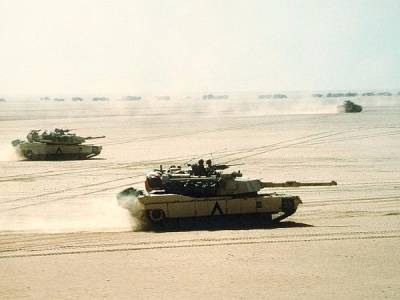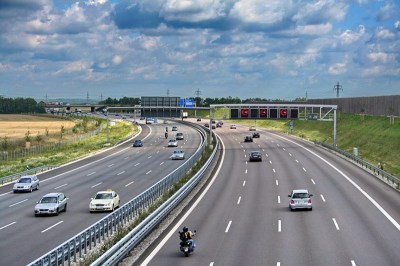Should I Use Wheels Or Tracks?
When it comes to dominating offroad performance, many people’s first thought is of tracked vehicles. Bulldozers, tanks and excavators all use treads, and manage to get around in difficult terrain without breaking a sweat. Today, we’re exploring just what makes tracked vehicles so capable, as well as their weaknesses.
It’s All About Ground Pressure

Let’s first look at how tank tracks work. There are a huge variety of designs, with differences depending on application. Different trends have been followed over time, and designs for military use in combat differ from those used for low-speed construction machines, for example. But by looking at a basic tank track design, we can understand the basic theory. On tanks, the track or tread itself is usually made up of individual steel links that are connected together with hinges, though other machines may use rubber tracks instead. The tracks are wrapped around one or more drive wheels, often cogged, which directly pull on the track. On the bottom of the vehicle are the road wheels, which ride on top of the track where it lies on the ground. The weight of the vehicle is carried through the road wheels and passed on to the tread, spreading out the load across a broader area. Outside of this, the track system may also have one or more idler wheels used to keep the track taught, as well as return rollers to guide the track back around without touching the road wheels.

Tank tracks, or continuous tracks as they’re more technically known, were developed initially for farm and logging applications, for heavy vehicles that needed to operate in soft terrain. Continuous treads had the advantage that they could support a vehicle’s weight over a much greater area than wheels. Spreading out the load meant that the ground pressure was lower, and thus the vehicle was less likely to sink into soft mud or sand. It also allowed a vehicle to put much more torque to the ground without slipping, thanks to the much larger contact patch compared to regular wheels. The party piece of the tank — the ability to crush smaller road vehicles — is as much a result of its huge weight as its tracks. However, the tracks are less likely to get tangled or damaged when driving over another vehicle, compared to a pneumatic tyre.
Awful Highway Mileage

However, tracks come with drawbacks that make them unsuitable for many applications. There’s a reason you don’t see tanks taking people to work on the New Jersey Turnpike; if you did you’d probably assume something political had gone very, very wrong. For many vehicular applications, the simple pneumatic tyre and wheel combination is more suitable. Pneumatic tyres do less damage to paved surfaces than tracks, and are better suited to higher speed operation. They’re also less noisy, and far easier to replace when damaged. Tracks are significantly more mechanically complicated, with the average tank having many more wheels and moving parts, as well as the tracks themselves. All of these add some loss to the driveline, making tracked transport far less fuel efficient, too. Steering on tracked vehicles can also be complicated for single-engine setups, requiring special gear mechanisms to allow the speed of each tread to be varied appropriately. Additionally, while tracks are great on soft surfaces, they don’t offer anything particularly special when it comes to ground clearance. In many cases, a properly designed wheeled vehicle may out perform a tracked one in a rock-crawling scenario.
Tracks as a Drive Train

Tracks are also used on smaller scale vehicles, from robots to radio controlled toys. Here, they maintain the benefits of lower ground pressure compared to wheels. However, the often lower weight of smaller scale vehicles means this isn’t as much of a benefit as it is for a main battle tank that must carry up to 60 tons of armour and weaponry into battle. Smaller scale vehicles that run on electricity can have the benefit of running one motor per track however, eliminating much of the steering complexity in single-engine vehicles. Much like larger vehicles, while tracks may offer better performance in soft surfaces, ground clearance is still important for dealing with obstacles like rocks.
Overall, it’s important to remember that tracks were designed to do one thing well, and that’s get vehicles through soft, boggy terrain like mud, snow and sand. If you’re having to deal with such conditions, the tank track might be just the engineering solution you’ve been looking for. If, however, high speed, efficiency, or comfort are more important – you’re probably best sticking with wheels!
from Blog – Hackaday https://ift.tt/37Oub70
Comments
Post a Comment